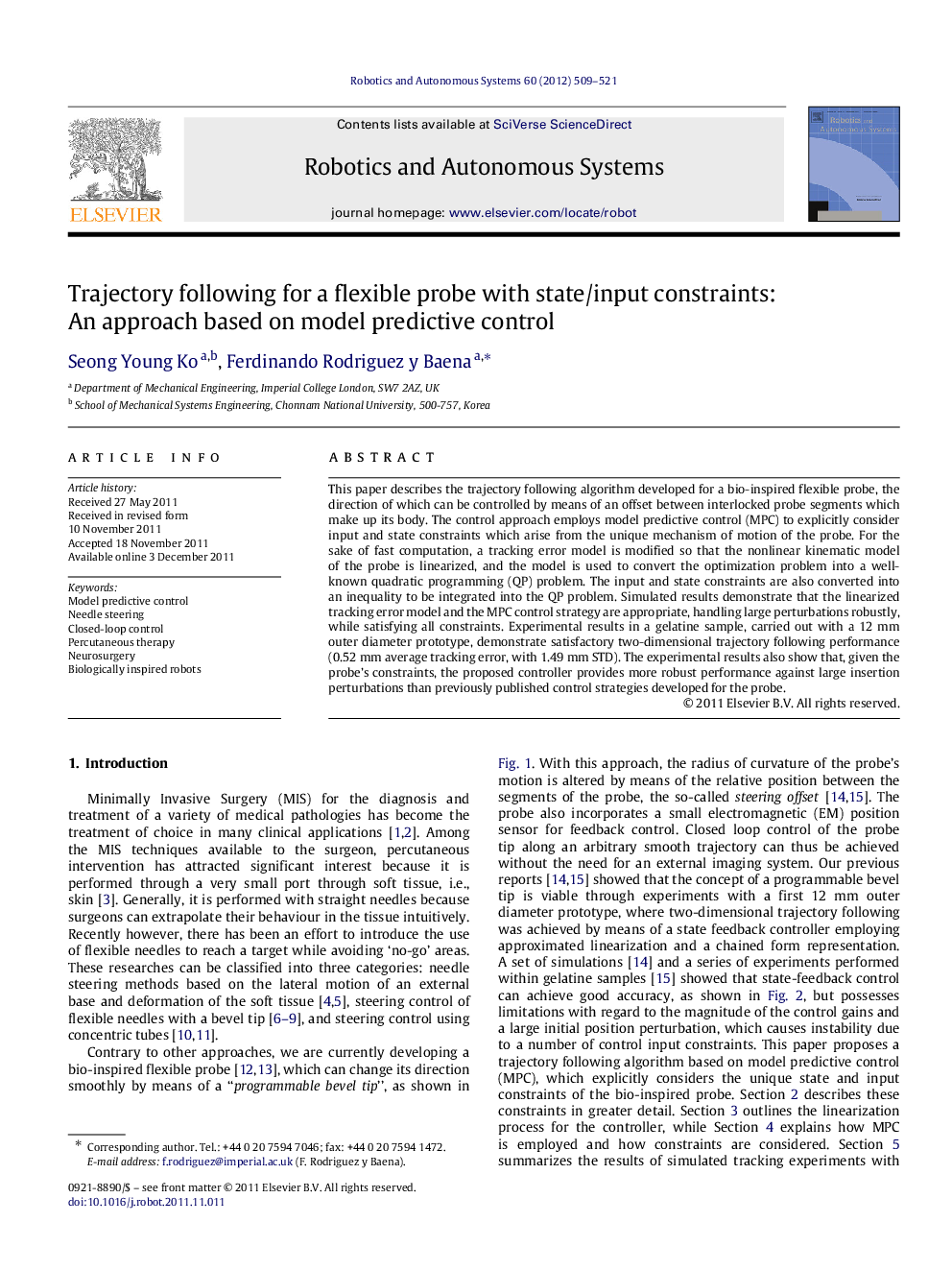| Article ID | Journal | Published Year | Pages | File Type |
|---|---|---|---|---|
| 412521 | Robotics and Autonomous Systems | 2012 | 13 Pages |
This paper describes the trajectory following algorithm developed for a bio-inspired flexible probe, the direction of which can be controlled by means of an offset between interlocked probe segments which make up its body. The control approach employs model predictive control (MPC) to explicitly consider input and state constraints which arise from the unique mechanism of motion of the probe. For the sake of fast computation, a tracking error model is modified so that the nonlinear kinematic model of the probe is linearized, and the model is used to convert the optimization problem into a well-known quadratic programming (QP) problem. The input and state constraints are also converted into an inequality to be integrated into the QP problem. Simulated results demonstrate that the linearized tracking error model and the MPC control strategy are appropriate, handling large perturbations robustly, while satisfying all constraints. Experimental results in a gelatine sample, carried out with a 12 mm outer diameter prototype, demonstrate satisfactory two-dimensional trajectory following performance (0.52 mm average tracking error, with 1.49 mm STD). The experimental results also show that, given the probe’s constraints, the proposed controller provides more robust performance against large insertion perturbations than previously published control strategies developed for the probe.
► Model predictive control strategy which considers both input and state constraints. ► Linearization of the nonlinear kinematic model of a bio-inspired flexible probe. ► Simulated comparison of model predictive control and state-feedback control. ►In vitro evaluation of MPC control with a flexible probe prototype in gelatine.
